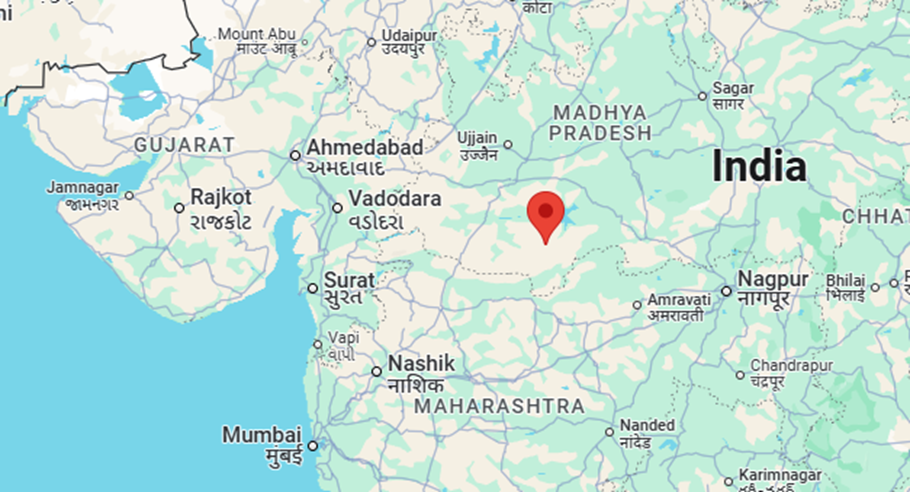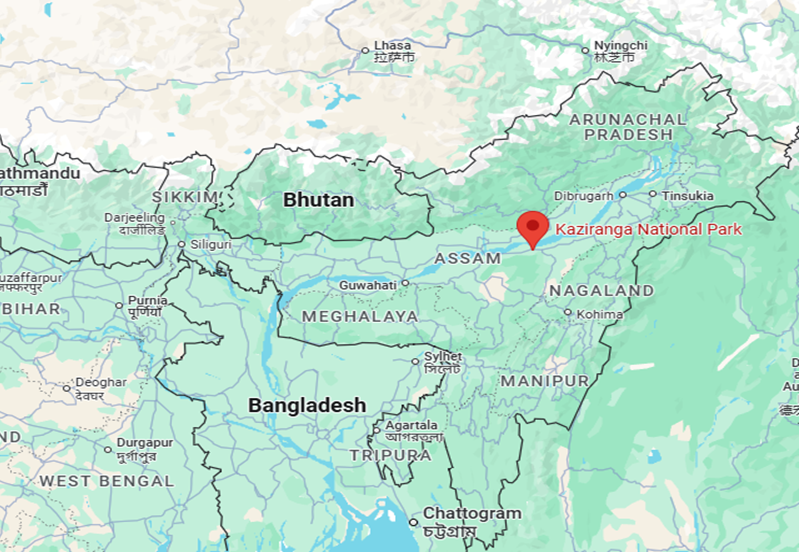- Courses
- GS Full Course 1 Year
- GS Full Course 2 Year
- GS Full Course 3 Year
- GS Full Course Till Selection
- Answer Alpha: Mains 2025 Mentorship
- MEP (Mains Enrichment Programme) Data, Facts
- Essay Target – 150+ Marks
- Online Program
- GS Recorded Course
- Polity
- Geography
- Economy
- Ancient, Medieval and Art & Culture AMAC
- Modern India, Post Independence & World History
- Environment
- Governance
- Science & Technology
- International Relations and Internal Security
- Disaster Management
- Ethics
- NCERT Current Affairs
- Indian Society and Social Issue
- NCERT- Science and Technology
- NCERT - Geography
- NCERT - Ancient History
- NCERT- World History
- NCERT Modern History
- CSAT
- 5 LAYERED ARJUNA Mentorship
- Public Administration Optional
- ABOUT US
- OUR TOPPERS
- TEST SERIES
- FREE STUDY MATERIAL
- VIDEOS
- CONTACT US
PLACES IN NEWS 28th June 2025
PLACES IN NEWS 28th June 2025
28-06-2025

1. Khandwa, Madhya Pradesh
Why in the News?
- Khandwa district has been ranked first in India for its exemplary water conservation efforts under the “Jal Sanrakshan Bhagirath” campaign by the Ministry of Jal Shakti.
- Overall, Madhya Pradesh has been ranked 4th among all states.
- This recognition highlights the district’s success in mobilizing public participation and leveraging multiple funding sources for sustainable water management.
Key Highlights about Khandwa:
- Location: Situated in southwestern Madhya Pradesh, part of the Nimar region.
- Funding Sources: MGNREGA, 15th and 5th Finance Commission, CSR initiatives and public participation.
- Water Conservation structures: Well Recharge Pits, Recharge Shafts, Dugwells, Boulder Check Dams, Boulder Walls, Rooftop Rainwater Harvesting Systems, etc.
- Ghoda Pachhad River, a tributary of Narmada:
- With the support of local citizens and administration, this river has been revived.
- Using the ridge to valley system, water has been harvested over a 33 km stretch.
- This has enabled a possibility for the river to flow year-round.
- Topography Overview:
- Khandwa's terrain is largely defined by the uplands nestled between the Narmada and Tapti river valleys.
- These rivers run roughly parallel east to west, shaping the district’s natural drainage and elevation contours.
- Hatti Hill Range: Prominent in the southern part of the district, it borders and overlooks the Tapti Valley, culminating in the district's highest point — Pipardol Peak (917.5 m).
2. Kaziranga National Park

Why in the News?
- The Dhole, also known as the Asiatic wild dog (Cuon alpinus), was once thought to have disappeared from the Kaziranga-Karbi Anglong Landscape (KKAL) in Assam.
- Scientists from the Wildlife Institute of India (WII) have confirmed that the animal has returned to this area, according to a new study.
- Dholes need large forest areas that are peaceful and not disturbed by humans.
- Their presence in this area proves that the corridor is still healthy for wildlife.
- So, it is important to protect and conserve this forest corridor.
About Kaziranga National Park:
- Location and Area
- Situated in the state of Assam.
- Spreads over 42,996 hectares.
- Legal and Conservation Status
- Declared a National Park in 1974.
- Became a Tiger Reserve in 2006.
- International Recognition
- Declared a UNESCO World Heritage Site in 1985.
- Recognized as an Important Bird Area by BirdLife International.
- Key Wildlife Species
- Famous for the largest population of one-horned rhinoceroses.
- Pobitora Wildlife Sanctuary has the second highest rhino density after Kaziranga.
- Conservation focus is on the "Big Four":
- One-horned Rhinoceros
- Asian Elephant
- Royal Bengal Tiger
- Asiatic Water Buffalo
- 2018 census:
- 2,413 rhinos
- Around 1,100 elephants
- 2014 tiger census:
- Estimated 103 tigers
- 3rd highest tiger population in India (after Jim Corbett and Bandipur National Park)
- Hosts 9 out of 14 species of primates found in the Indian subcontinent.
- Famous for the largest population of one-horned rhinoceroses.
- Rivers and Transport
- National Highway 37 passes through the park.
- Over 250 seasonal water bodies are present.
- The Diphlu River flows through the park.
- Other National Parks in Assam
- Dibru-Saikhowa National Park
- Manas National Park
- Nameri National Park
- Rajiv Gandhi Orang National Park




